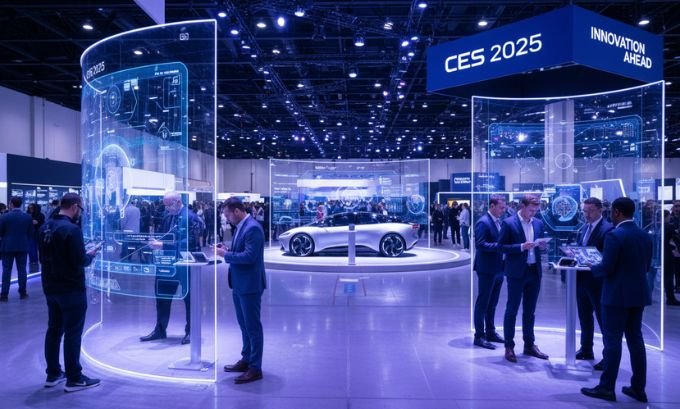This year, the Consumer Electronics Show 2025 felt different. It was less about dazzling spectacles and more about quiet confidence. The technologies unveiled in Las Vegas were not just impressive; they were practical, designed to seamlessly integrate into our daily routines. The future on display was one where technology works with us, not just for us.
The main takeaway was clear: intelligence is becoming ambient. Artificial Intelligence (AI) has moved beyond a buzzword to become the invisible engine making our devices more helpful and intuitive. The raw horsepower for this revolution comes from chipmakers like Nvidia and AMD, while household names like Samsung are making our homes smarter. In the auto world, companies such as Hyundai and BMW are transforming our cars into perceptive partners. This article will guide you through the most significant trends from CES, with expert insights from sources like CNET, to show how these innovations are poised to shape your everyday life.
Table of Contents
Consumer Electronics Show 2025: AI Gets a Real Job
At the Consumer Electronics Show 2025, AI was the connective tissue holding everything together. But this time, it was less about flashy demonstrations and more about meaningful purpose. It seems the industry has taken lessons from the hype surrounding past devices, like the Rabbit R1, and shifted its focus. Instead of creating more standalone gadgets, companies are embedding intelligence directly into the products we already know and use.
This means technology is finally starting to anticipate our needs. Your next car won’t just follow a map; it will be a proactive partner in your commute. Your home won’t just respond to a command; it will learn your family’s patterns and adjust accordingly. This is no longer science fiction. It’s the result of incredible advancements in processing power and a more human-centered approach to software design, all aimed at making our lives a little bit easier.
A Personal Experience: The Day a Car Read My Mind
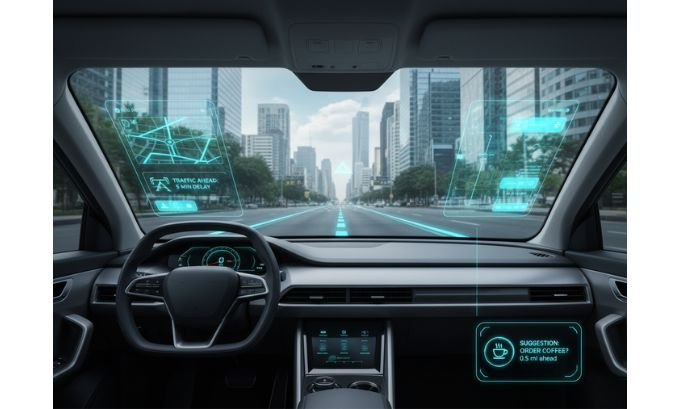
Having covered CES for over a decade, I’ve become pretty good at spotting a gimmick. But this year, a single test drive cut through my usual cynicism. I was in a prototype vehicle featuring Hyundai’s next-gen in-car AI. As I navigated a simulated city, the system did something that felt truly next-level. It noticed heavy traffic on my route, checked my calendar, and understood the context.
A calm, natural-sounding voice said, “There’s a major delay on your route, and I see you have a meeting in 30 minutes. I’ve found an alternate route that will get you there on time. There’s also a coffee shop with a drive-thru on the way. Would you like me to place your usual order so it’s ready when you arrive?” I was floored. It wasn’t just a voice assistant; it was a problem-solver. It connected the dots between my location, my schedule, and my habits to offer a genuinely helpful solution. While the system still had a few quirks, it was a powerful glimpse into the future of “agentic AI.” This is the real-world utility that devices like the Rabbit R1 hinted at, now coming to life in the systems we use every day.
What I Like About This New Wave of AI:
- Contextual Intelligence: AI is finally moving beyond simple queries to understand the “why” behind our actions.
- Reduced Friction: The goal is to automate the small decisions and tasks that add up to our daily mental load.
- Practical Efficiency: From conserving a car’s battery to finding the quickest way through traffic, AI is delivering measurable benefits.
- Seamless by Design: Intelligence is becoming a core component of product development, not a feature added as an afterthought.
Areas for Improvement:
- The Trust Gap: For proactive AI to be widely adopted, users must feel confident that their personal data is secure and being used responsibly.
- The Connectivity Requirement: Many of these advanced features depend on a stable internet connection, which could limit their usefulness in many areas.
- Navigating the Settings: While the end-user experience is getting simpler, the initial setup and customization of privacy controls can still be daunting.
If you’d like to learn more about Consumer Electronics Show 2025, you’re welcome to read this detailed article gogonihon.jp.net, mindjournal.co and techbullion.in
The Brains Behind the Brawn: Nvidia and AMD Fuel the Future
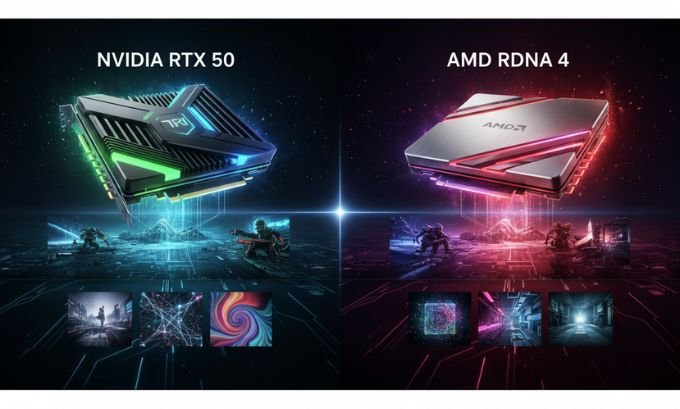
Every groundbreaking device at the Consumer Electronics Show 2025 was powered by complex silicon working tirelessly behind the scenes. This year, the undisputed leaders of the chip industry, Nvidia and AMD, demonstrated why they are at the center of this technological revolution. Their announcements are the foundation for the next generation of computing, influencing everything from creative workflows and gaming to the very structure of AI.
Nvidia continued to set the pace with the official launch of its GeForce RTX 50 series GPUs. These chips promise to deliver unprecedented levels of realism in digital environments, a game-changer for both gamers and visual effects artists. More profoundly, Nvidia reinforced its position as the engine of the generative AI movement, with its hardware underpinning the models that are reshaping our world.
AMD came to the show with its own formidable lineup, unveiling its new RDNA 4 GPUs. The company’s strategy focuses on delivering top-tier performance with remarkable power efficiency, making high-end computing more accessible to everyone. As the experts at CNET have consistently highlighted, this spirited competition between Nvidia and AMD is what drives the industry forward. The fluid graphics of a BMW Panoramic iDrive Display and the sophisticated AI in a Samsung refrigerator are direct results of this ongoing innovation.
Qualcomm Redefines Mobile Video with the Snapdragon 8 Elite Gen 5
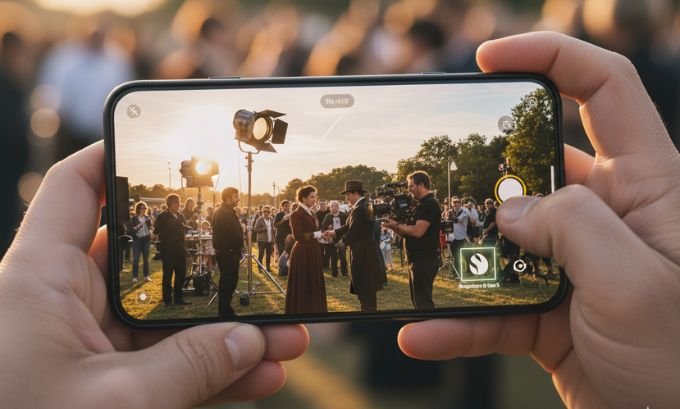
While the PC chipmakers battled for supremacy, Qualcomm delivered a defining moment for mobile technology. The introduction of the Snapdragon 8 Elite Gen 5 processor is not just an upgrade; it’s a fundamental shift in what a smartphone can achieve, especially in the realm of video capture.
The chip’s crown jewel is its Advanced Professional Video codec, which works with a fully computational video pipeline. In plain English, this means your phone can now record video with the color depth, dynamic range, and clarity that was once the exclusive domain of professional cinema cameras.
In a powerful demonstration at its Snapdragon Summit, Qualcomm used a Samsung Galaxy S25 Ultra, powered by the new chip, to film parts of its own live event. The footage was broadcast worldwide, seamlessly intercut with video from traditional broadcast cameras, and the quality was indistinguishable. This real-world test proves that high-quality content creation is no longer limited by expensive equipment. It’s a democratization of video for everyone, from aspiring filmmakers to parents capturing family moments.
Snapdragon 8 Elite Gen 5: What’s New for You
| Feature | Real-World Benefit | Everyday Use Case |
|---|---|---|
| Advanced Video Codec | Captures video with stunningly accurate color and detail, just like your eyes see it. | Filming a vibrant sunset and capturing all the subtle colors without any distortion. |
| Computational Pipeline | Applies real-time video enhancements like stabilization and color adjustments. | Smoothing out a shaky video of your dog playing at the park as you’re recording. |
| Next-Gen AI Engine | Powers smarter camera features that adapt instantly to any lighting or action. | Your phone’s camera identifying a fast-moving child and automatically preventing motion blur. |
| Optimized Power Usage | Delivers peak performance for longer without overheating or draining the battery. | Recording an entire concert or sports game in high resolution without needing a power bank. |
The Automotive Experience, Reimagined at CES
The Consumer Electronics Show 2025 has firmly established itself as a premier destination for automotive innovation. This year, carmakers demonstrated that the future of driving is about creating a holistic experience, with companies like Hyundai and BMW leading the way in turning the car cabin into the ultimate smart device.
Hyundai captured the imagination of attendees with its incredible full-windshield holographic display. This is far from the small heads-up displays of the past. It’s an immersive system that projects crisp, interactive graphics across the entire windshield. Navigation arrows appear to float on the road ahead, while safety alerts can highlight potential hazards in your direct line of sight. It’s an intuitive design that feels safer and more natural than glancing at a screen.
Meanwhile, BMW presented its own vision of the future with the BMW Panoramic iDrive Display. This gorgeous, ultra-wide screen flows elegantly across the dashboard, merging the driver’s instruments and infotainment controls into one cohesive, cinematic panel. With its stunning colors and deep blacks, the display transforms the car’s interior into a sophisticated and futuristic command center. These innovations show that the next frontier in automotive design is the quality of the digital experience.
Samsung’s Vision: An Intelligent and Connected Home
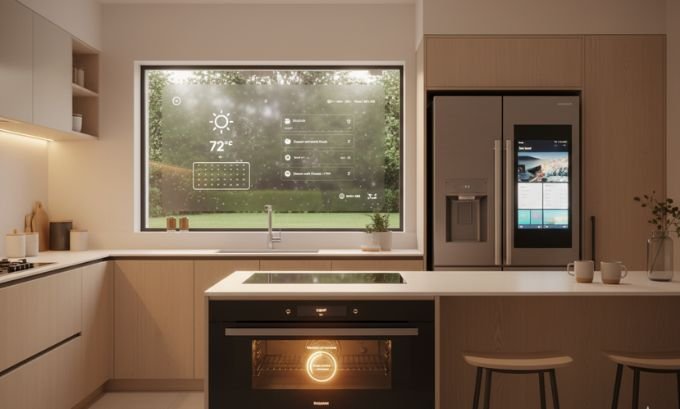
As a perennial heavyweight at CES, Samsung continued to advance its vision of a seamlessly connected lifestyle. The company’s strategy is built on two key pillars: developing next-generation screen technologies that blend into our environment and embedding helpful AI into every corner of the home.
On the display front, Samsung offered an exciting glimpse into the future with its latest transparent and rollable screen concepts. These are more than just tech demos; they are thoughtful explorations of how displays can adapt to our spaces. Imagine a window that can transform into a high-definition screen for movie night, or a pocket-sized device that unfurls into a large tablet for work.
However, it was Samsung’s practical application of AI that felt most relevant to today. The company showcased a new washer and dryer set that uses sensors and AI to identify fabric types and soil levels, then automatically runs the optimal cycle. Its new smart oven uses an internal camera to recognize the food you put inside and then suggests the perfect cooking mode and temperature. As the team at CNET observed, this is AI at its best—working quietly in the background to make our daily chores just a little bit easier.
Before you dive into the future of tech, explore the latest Japan-inspired gadgets, home essentials, and collectibles at TokyoMart.store — where innovation meets lifestyle.
Frequently Asked Questions (FAQ)
1. What were the most important trends at the Consumer Electronics Show 2025?
The biggest themes were the shift toward practical, integrated AI; revolutionary in-car technology like holographic displays; the foundational power of new chips from Nvidia and AMD; and the continued evolution of the smart home, led by brands like Samsung.
2. How is AI different in new products this year?
This year, AI is less about novelty and more about utility. It’s being used to create proactive assistants that anticipate your needs, optimize device performance, and automate daily tasks in a way that provides tangible, real-world value.
3. What did chipmakers like Nvidia and AMD announce?
Nvidia revealed its GeForce RTX 50 series GPUs, pushing the boundaries of gaming and AI processing. AMD launched its RDNA 4 GPUs, focusing on a powerful combination of high-end performance and energy efficiency. These chips are the building blocks for the next generation of tech.
4. How is the driving experience changing based on what was shown at CES?
The in-car experience is becoming more immersive and intelligent. Hyundai showcased a full-windshield holographic display for intuitive navigation, while BMW introduced its Panoramic iDrive Display to create a seamless digital cockpit. The car is transforming into a smart, connected space.
5. What makes the Snapdragon 8 Elite Gen 5 special?
It’s Qualcomm’s latest flagship mobile chip, and its standout feature is an advanced video system. It allows smartphones to capture video with a level of quality that was once only possible with expensive professional cameras, democratizing high-end content creation.
6. Did we see a successor to standalone AI devices like the Rabbit R1?
The trend at the Consumer Electronics Show 2025 actually moved away from single-purpose AI gadgets. Companies are now focused on integrating that intelligence directly into the major platforms we already use, such as our phones, cars, and home appliances.
7. Who offers the most reliable coverage of CES 2025?
For in-depth analysis and hands-on reviews, technology news outlets like CNET are an invaluable resource. Their expert teams provide comprehensive coverage from the show floor, separating the truly innovative from the merely interesting.
Conclusion: A Future Built on Practical Innovation
The Consumer Electronics Show 2025 left a lasting impression of a tech industry that is growing up. The focus has shifted from “what can we build?” to “how can we help?” The most exciting innovations were not necessarily the most futuristic, but the most thoughtful—the ones designed to make our lives safer, easier, and more connected in practical ways.
From the foundational power of new chips from Nvidia and AMD to the intelligent experiences being crafted by Hyundai, BMW, and Samsung, the future of technology is about seamless integration and intuitive assistance. As these products move from the showroom floor to our homes, we are on the verge of a new era where our devices finally start to work in harmony with us.
To stay on top of these developments, keep an eye on trusted tech sources like CNET and look for products powered by these game-changing technologies, including the Snapdragon 8 Elite Gen 5. The next chapter in technology is here, and it’s being written for everyone.
About the Author
Alex Carter is a veteran technology journalist with 15 years of experience covering the consumer electronics industry. A regular attendee of the Consumer Electronics Show for the past decade, Alex offers a seasoned perspective on emerging trends in AI, mobile computing, and automotive tech. His work, featured in major tech publications, is dedicated to making complex innovations accessible and understandable for a broad audience.

